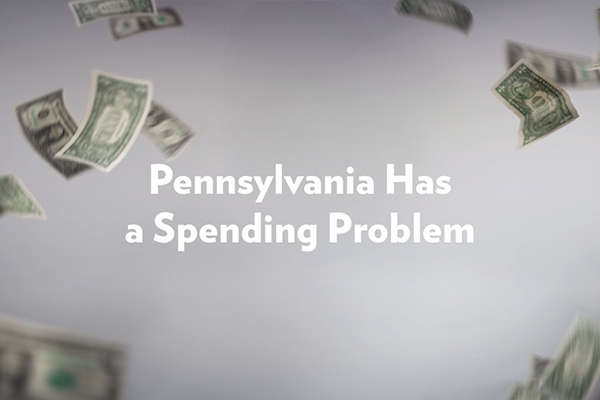Media

This Year’s Budget Continues Past Trends
The 2019-2020 budget spending bill is on the governor’s desk and lawmakers are claiming it represents an increase of only 1.8 percent over last year. If this were true, it would be a refreshing change from the status quo, but when you sift through the spin you find state spending continues to grow faster than the economy. In short, Pennsylvania’s spending problem continues in the new budget.
Understanding why 1.8 percent is inaccurate requires unpacking the budget process. Each year, lawmakers vote on an appropriations bill that lists spending from the General Fund. Bill estimates for this year are $33.9 million and last year were $32.7 million. This represents an increase of 3.88 percent from budget estimates, which is clearly higher than the modest amount lawmakers are boasting.
What happened? When calculating the percentage, lawmakers included overspending of roughly $674 million. These discrepancies over what was estimated versus what was spent can help to disguise the true growth. In addition to overspending, the new bill includes various cost shifting to make General Fund spending look artificially low. When you account for all these manipulations, this appropriations bill represents a 4.7 percent increase over last year's enacted budget.
Chart: General Fund Spending in the 2019-20 Budget
Unfortunately, the pace of state spending growth is in line with historical trends. Since the 1970s, Pennsylvania’s budget has primarily moved in one direction, and that is up. Total state spending growth has far surpassed that of the state’s economy as measured by GDP, as well as the size of the state as measured by population.
Consistently spending beyond what the state can support makes the Taxpayers Protection Act (TPA) crucial. The TPA seeks to tie spending increases to the growth of the state. The most popular way to measure this is inflation plus population change. Without the TPA, it is all but guaranteed that Pennsylvania will continue down the path of overspending fueled by tax hikes and borrowing.
According to Governor Wolf’s executive budget for 2019-20, the General Fund is expected to increase by over $3 billion over the next five years, creating a new—and higher—baseline for future years. It’s likely that this baseline will be even higher than estimated, given the state’s propensity to spend above what is appropriated in the budget.
Chart: Pennsylvania Consistently Overspends
How do policymakers pay for this overspending? In the past, accumulating new debt has been a favorite method—along with tax hikes. State and local debt is over $127 billion dollars, or almost $10,000 for every person.
This debt doesn’t appear to be going anywhere soon with Wolf proposing even more borrowing in order to cover an anticipated $4.5 billion for his Restore PA plan. In the next five years, debt servicing is expected to grow faster than any other of the other eight categories covered in the Program Budget Summary of the Executive Budget. While not a significant portion of spending today, continuing to accumulate debt will result in a financial problems in upcoming years.
Eventually this overspending, borrowing, and postponing will catch up. The real choice facing lawmakers in Harrisburg isn’t if they will need to act, but when. The first step is to enact spending controls like the TPA to help reverse the state’s fiscal trajectory.